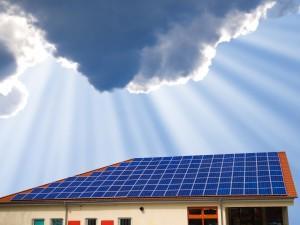Home Solar Power – the Best Green Investment You’ll Ever Make
There is a commonly held view that solar is just too expensive for your average home owner to afford. But in the last few years the cost of panels, components and installation have dropped by up to 75%. Additionally, there are a number of attractive Federal incentives which mean that the cost of the initial outlay is slashed by 30%. And yet, it seems this kind of information just isn’t reaching the public. A recent nationwide poll revealed that 97% of homeowners overestimated the cost of installing solar, while only 3% of participants knew that the upfront cost of solar installation could be less than $1,000 – and sometimes nothing at all.

A number of Federal and state tax incentives still apply, both for commercial and residential solar projects, and individual states offer their own schemes. According to the US Department of Energy, homeowners can offset 30% towards the initial installation with schemes such as the Renewable Residential Energy Tax Credit.
Plus, it’s great to know that while you’re cutting your fuels bills, you’ll be helping to save the planet too. Statistics provided by UK-based Southern Solar show that even a small system on an average domestic or office roof will stop over 1700Kg of CO2 being released into the atmosphere.
What is solar electricity?
Solar electric panels, otherwise known as photovoltaic (PV) panels, generate electricity from sunlight. This electricity is used as a supplement to your mains electricity, to power all the normal electrical appliances. They are the simple way to turn your roof into a green power station.
And solar Thermal?
Then there’s solar thermal panels which heat the water in your house by working in conjunction with your boiler. Direct-use thermal systems use solar energy directly as a source of heat for hot water or swimming pools, and can also use collector systems or passive solar architecture to heat living and working spaces.
And net metering?
Utilities in many states offer net metering programs, and this makes it easy for home owners to install solar electric systems on their roofs, and can help residential solar owners to benefit financially from their solar system. A net metering program means that extra power generated by the solar equipment during the day is fed back into the utility’s electrical grid for distribution to other customers. Then, at night or at those times when the homeowner requires more power than their system generates, the building draws power back from the utility grid.
Net metering bypasses the need for expensive storage systems, and doesn’t waste extra power generated when sunlight is at its peak. Such schemes allow solar users to retain access to utility-supplied power as well.
Where do I start?
Source accredited solar installers in your local area and ask for an initial free consultation and quote. Any reputable company will provide this, and be able to survey your property to advise you on the best, most economic and efficient system for your home. A good place to begin you search is to check out this list of America’s top solar installers http://cleantechnica.com/2012/02/01/top-residential-solar-installers/.
Any solar installers worth they salt will also be able to provide information on Federal and State incentives, and how, where and when to apply for support.
Installation is quick and easy, and only takes around 2 or 3 days for an average domestic unit. These clean, efficient, elegant systems have no moving parts and require little to no maintenance.
In the long run investing in solar represents an excellent return on investment, and will help combat climate change. A good quality solar array should last a lifetime (40 years or more), so you and your family can enjoy low cost, green energy for generations to come.

